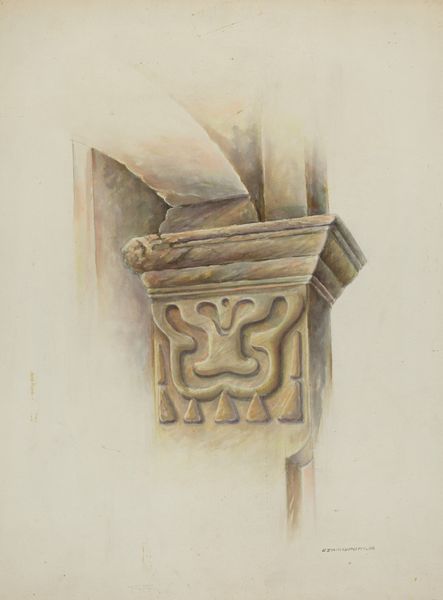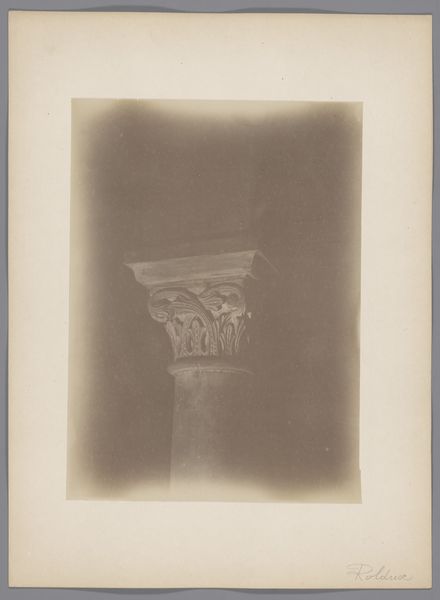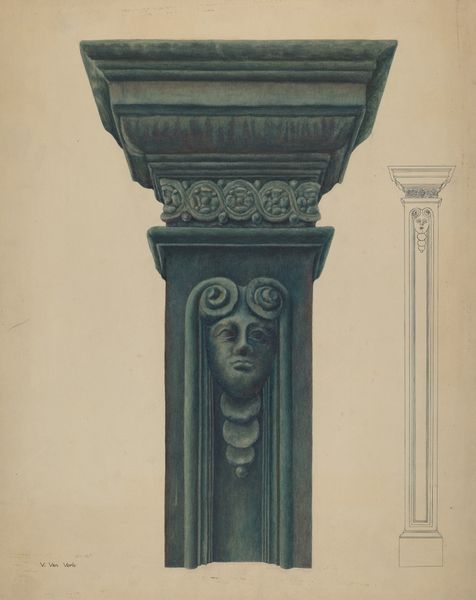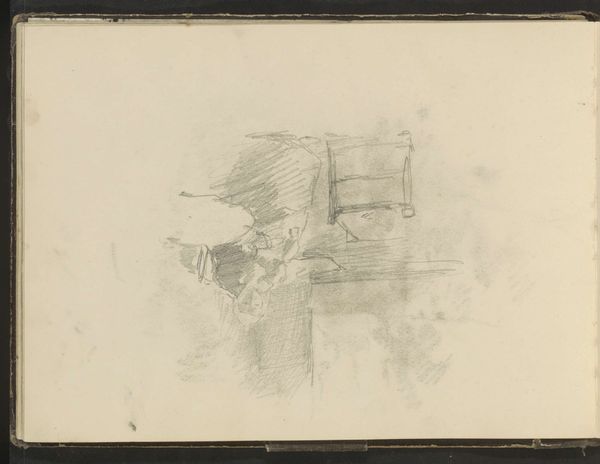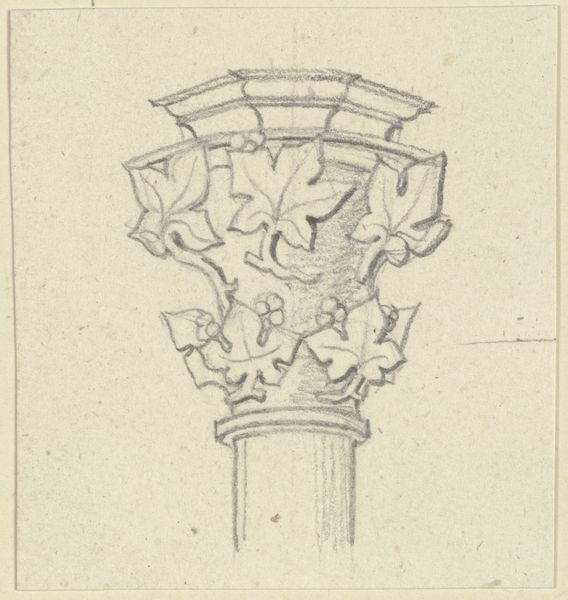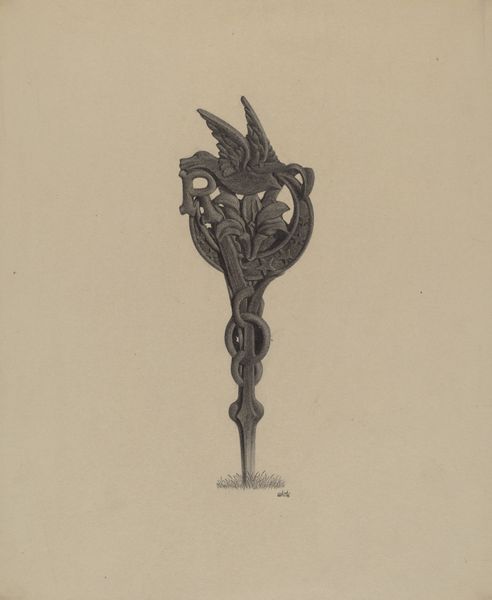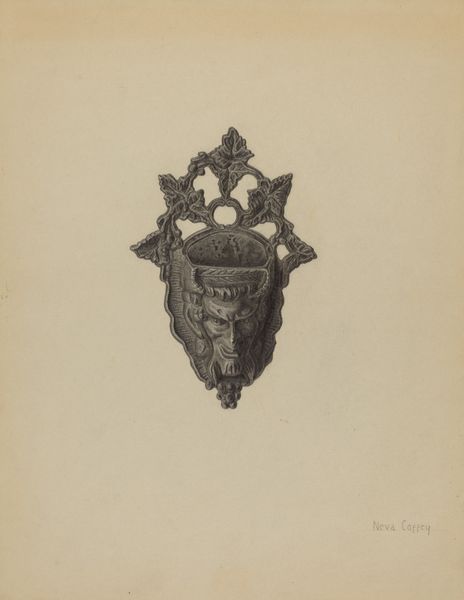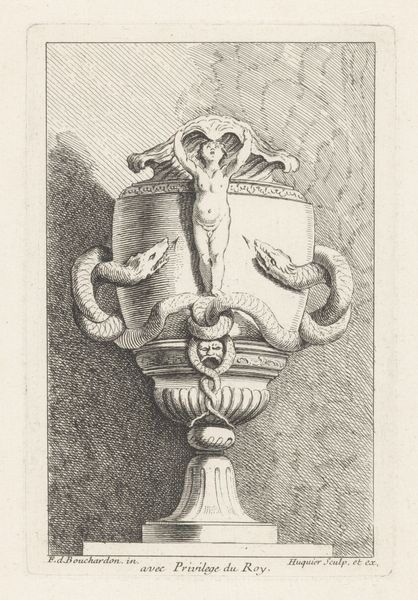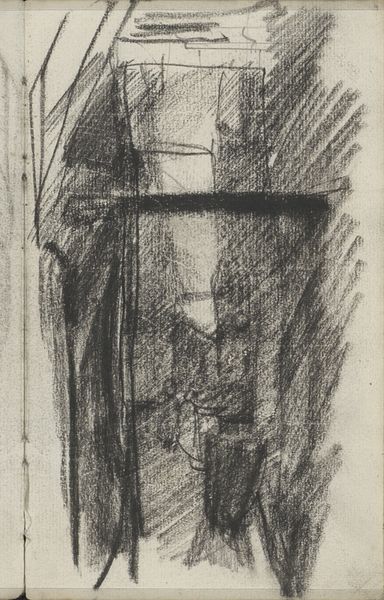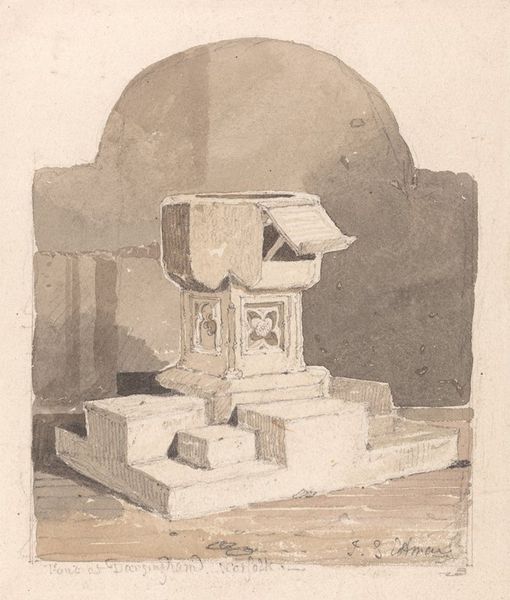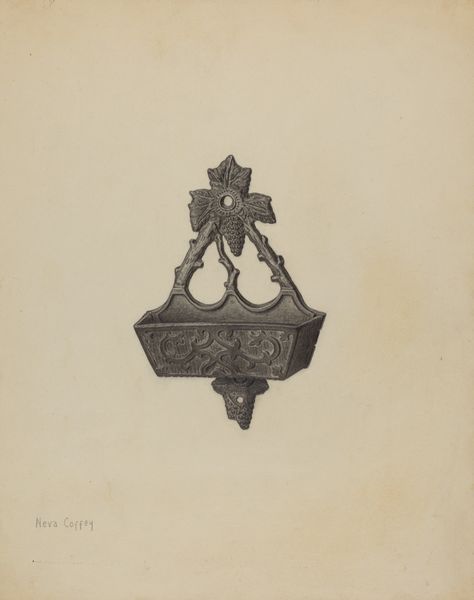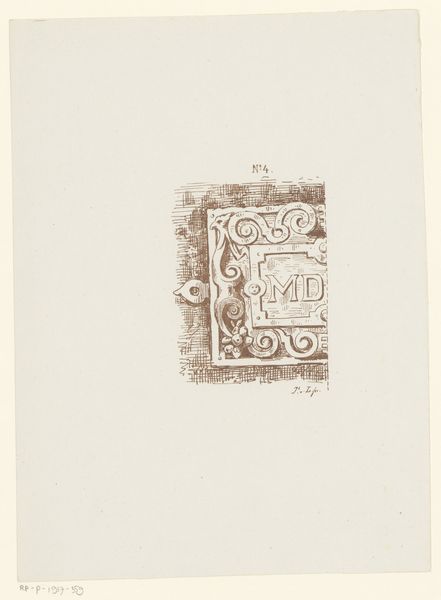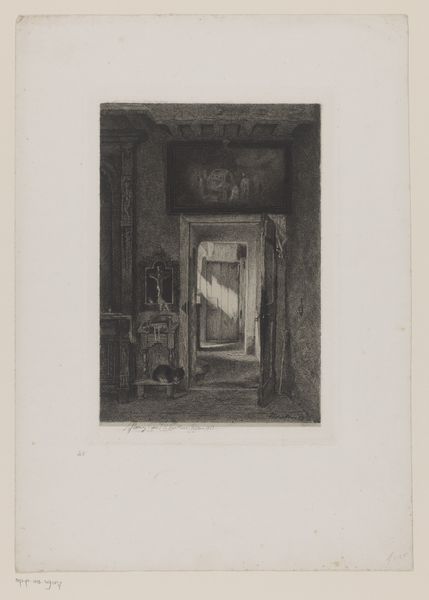
drawing
#
pencil drawn
#
drawing
#
amateur sketch
#
toned paper
#
light pencil work
#
pencil sketch
#
incomplete sketchy
#
personal sketchbook
#
sketchbook drawing
#
pencil work
#
sketchbook art
Dimensions: overall: 35.5 x 23.6 cm (14 x 9 5/16 in.)
Copyright: National Gallery of Art: CC0 1.0
Curator: Looking at this work, titled "Architectural Detail," a pencil drawing by Harry Mann Waddell created sometime between 1935 and 1942, I’m immediately drawn to the subject, seemingly taken right out of a personal sketchbook. What is your impression? Editor: There's something intriguing and archaic about it. That central motif almost feels totemic—the simplified, abstract form calls to mind ancient protective figures, something one might find guarding a portal. It suggests a threshold, a transition point. Curator: It's interesting you mention its function as a potential protector. The years during which this work was created fall at a time of tremendous geopolitical change and social stress. One might suggest the artist's choice to focus on what are traditionally perceived as reliable and sturdy architectural details may reflect society's turn towards past symbols of certainty during the years leading up to, and inclusive of, World War II. Editor: Precisely. That repetitive pattern just beneath the main image--those pendant triangles--strike me as carrying an almost ritualistic significance. Triangles frequently appear as symbolic representations of stability and higher consciousness, don't they? Their repeated use could emphasize that symbolic intent. Curator: Absolutely. Furthermore, we can't ignore the inherent nature of architectural ornamentation within this time period. Beaux Arts architecture, popular in the earlier part of the 20th century, heavily leaned into neoclassical designs. Waddell's choice to highlight an architectural element harkens back to that established design practice. Though he sketches this, he nevertheless is showing his acceptance and appreciation of Beaux Arts, as his career progressed. Editor: And considering it's a pencil sketch, it grants a sort of intimacy. You see the artist's hand, their process. You're invited to ponder not just the finished product but also the act of creation, the artist's own interaction with these deeply meaningful visual symbols. It emphasizes a connection that architecture on its grand scale may obscure. Curator: In observing a sketch as opposed to the architecture itself, the viewers become aligned with the original creator of this motif, solidifying the idea of Waddell drawing inspiration and insight from past makers. Ultimately, that connection allows for a deeper interpretation of this imagery, even without explicit cultural context. Editor: That's a brilliant thought. So the artist’s intention remains open to multiple interpretations through his draftsmanship and selection of subject. What began as what some might dismiss as just an amateur sketch is teeming with layered history. Curator: A fitting conclusion for a piece like this: "Architectural Detail" allows a complex historical reading into what is initially assumed to be an unassuming artifact.
Comments
No comments
Be the first to comment and join the conversation on the ultimate creative platform.
